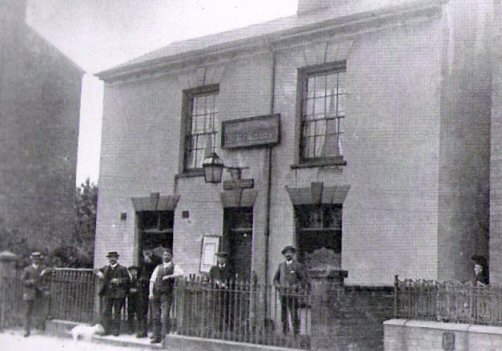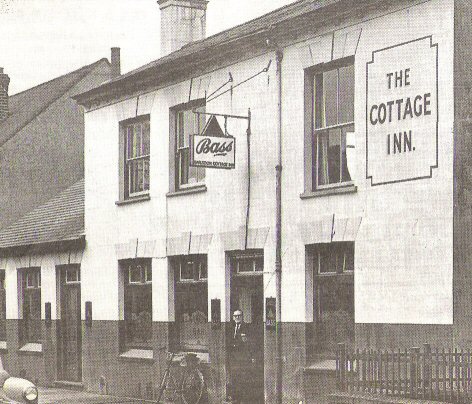

The Earlsdon Cottage Inn
The City Arms and the Royal Oak were built as pubs, but the Earlsdon Cottage Inn has a different story. Joseph Aston Atkins, aged 28, and employed in the watchmaking industry, was at Browetts, the solicitors, on 10 May 1852, signing a conveyance. This was for the purchase of plot 131, Warwick Street, on the newly laid out Earlsdon estate, but it wasn't until three years later that he was able (with the help of a mortgage) to have a house built on this plot. Nevertheless he was one of Earlsdon's first residents. The son of a weaver, Joseph had been apprenticed at Rotherhams as a watch motioner, which meant that his part in the watch making process was making and assembling the mechanism which controlled the motion or rotation of the watch hands, a highly skilled operation. According to the first relevant census for the area in 1861, we find Joseph, now aged 37, settled in his Warwick Street home with his wife Eliza, a nephew Frederick Webb, aged 18, and another boy, Richard Winsett, aged 15,. Both boys were working as apprentices in the watch trade. Joseph and Eliza do not appear to have had children of their own. From the front the house appeared like any other cottage, double-fronted with a living room on one side of the central door and the parlour on the other, over which were two bedrooms. The kitchen with its earthenware sink and single cold water tap was at the back and over this was Joseph's topshop, where he and the two apprentices worked, seated at the bench under the large topshop windows. The privy (there were no flush toilets in Earlsdon for another 50 years) was at the bottom of the garden. By the time of the 1871 census a change had taken place. Joseph was no longer a watchmaker, he had become instead a licensed victualler and the cottage had become an inn, appropriately named the 'Earlsdon Cottage Inn'. Why Joseph changed his vocation we can only guess at, but it is probable that it was his fondness for the bottle which persuaded him. Just four months after the census Joseph was dead, the cause of death cited as 'softening of the brain'. Eliza didn't mourn him for long and within a few months she had married a neighbour from Arden Street, George Harper, a widower, who with his four sons and one daughter moved into the Cottage and took over the license. Fourteen years later and Eliza was a widow again and Alfred Harper, the third son, ran the inn until he too died at the early age of 33 in 1895. His young widow Caroline, also didn't pine for long and remarried, although she kept control of the inn. In 1901 she sold out to Bishop and Bares, the Coventry Wine and Spirit Merchants for what must have been a very satisfactory sum of £2,000. There followed a succession of tenant licensees. In the tweneties the inn was kept by George Chaplin, a former fullback and captain of Coventry City Football Club. In 1924 Bishop and Bates sold out to James Eadie, the Burton on Trent brewers and the Cottage underwent a transformation. A smokeroom was added on the side, the interior was refurbished and Joseph Atkins topshop was converted into a concert room. Since this time there has been a stream of interesting licensees over the years, who have all put their own individual stamp on the pub, such as William Clews who was a first class runner. He was at the Cottage for 28 years until 1957. Another former licensee was Reg Nott and Beattie who started live music concerts on Friday and Saturday evenings.
More recently it underwent another transformation with a 21st century refurbishment. It has thus lost its original charm and changed its clientele, no longer appealing to the locals it now attracts younger customers as a 'club style' bar. |

